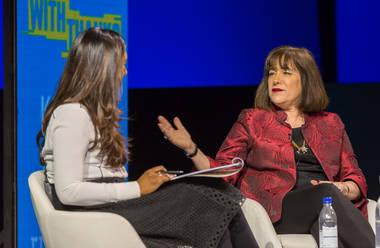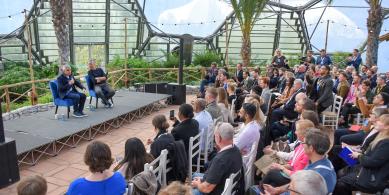What did you think about The Marketing Society choosing brave as a theme for 2017?
When I first heard about the theme brave, I completely disagreed. I didn’t understand why we were using this word when the mission for the Marketing Society is to inspire bolder marketing leadership.
But, actually, this theme has had great benefits. Brilliant marketers do have to be brave – in their intent, in their action and in their voice. And by opening up taboo subjects like failure, mental health and what constitutes “bad leadership” we demonstrate that people can talk openly and bring their whole selves to work. Because facing issues directly is the only way through.
And we believe that makes for stronger marketing leaders. Strong leaders drive company growth and create the environment in which people can flourish. What’s more important than that?
But the big point I want to make is we should back our teams even when we may disagree. They may see something we don’t. So share your view for them to consider- but then back them when they make a call.
Our job as leaders is to get everyone to believe they are brave, it’s an attitude first, and it’s something that can be lived every day – not just in big situations. It’s about progressive, growth-oriented behaviours. Together, we can create contagious courage.
Do you consider yourself to be brave?
I think I’m anything but a brave person. But I’m driven to do a great job because I feel like I need to truly earn my pay check. So despite not seeing myself as brave, I end up doing bold things – because I want to deliver. I want Diageo and our people to grow – and in all honesty, that’s my only agenda. And when people know it’s not about a personal agenda – but what’s right for the company, they are far more likely to follow you over the hill.
Does bravery work commercially?
Let me give you a real example from Diageo. I think people know that in many markets the craft movement is alive and well. In the UK there are 300 gin and whiskey distilleries, and 1500 in the States. So picture the conversation… we’re asking for a whole bunch of money to invest in brands that could compete with us. And, oh by the way, people are drinking less, so we also want to invest in non-alcoholic start-ups too.
Rather than see craft brands as a threat – we want to partner with the best. We keep them entrepreneurial, and outside of our system - but we have the first right to buy them when they get to scale. In this way we’ve created the world’s first spirits accelerator through Distill Ventures.
In the old days investing in potential competitors sounded crazy. But we’ve learned you have to be where the consumer is. So what sounds like a crazy idea, at first, is actually a brave idea and it becomes the new normal. We watched investors move from agonising about what the craft movement might do to our business, to understanding that we’ve got a handle on what’s going on and they are now intensely interested in what we’re doing.
So I think that being brave is sometimes about having faith – you can’t see the answer but you have to trust that you will find a way.
What advice would you offer to others on selling big brave ideas into the board or other stakeholders in the business?
It’s down to you to shift other’s points of view. All too often I hear people complaining about how risk averse their Board is, without taking accountability for being the one that convinces them, that shifts the conversation. Or to be the director who has the honest conversation about the issue of risk aversion. It’s up to us as marketing leaders to own it.
I like Thomas Barta’s book on the 12 Powers of a Marketing Leader where he defines value creation as the intersection of customer needs and company needs. And to lead the company needs, you need to be accountable for mobilising your boss, your colleagues, your team and yourself. It’s a brilliant model.
You have to think strategically about who to influence. I often see people wasting time trying to convince everyone. It’s smarter to be laser-like about who you’re trying to influence. Who has the power? Who has the money? And then try to understand their point of view. If you really understand their perspective and motivations – you have a much better chance of influencing them.
I never go in with a complete solution. Because I think other people’s views matter. It’s by putting our head together that we come out with the third way – a combination of perspectives that is ideally big and bold.
Have your own north star. The final thing I’d say is you need to listen hard, but you have to have your own north star about what’s right – or you’ll get whipped around by everyone’s perspectives. And if that North Star is truly rooted in growth of the business, rather than ego, or what your team wants – your chances of success are much higher.
Newsletter
Enjoy this? Get more.
Our monthly newsletter, The Edit, curates the very best of our latest content including articles, podcasts, video.
Become a member
Not a member yet?
Now it's time for you and your team to get involved. Get access to world-class events, exclusive publications, professional development, partner discounts and the chance to grow your network.




